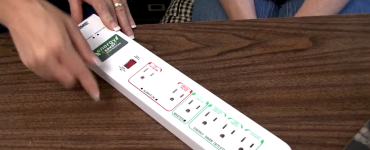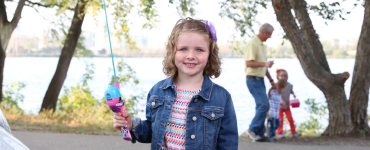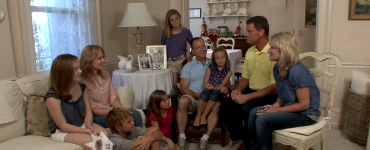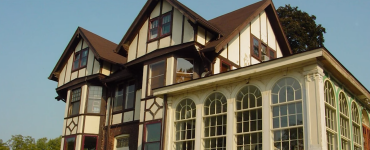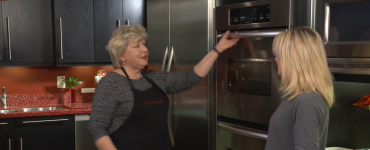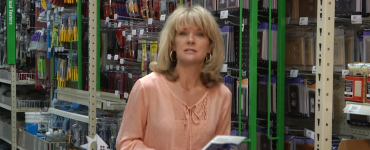101 easy ways to save energy
It may not seem like using an LED bulb or fixing a leaky faucet will do much to reduce your energy costs or protect the environment.
But if every household practiced just a few simple conservation ideas like the 101 easy ways to save below, we could reduce energy consumption by a significant amount.
All it takes is a few minutes each month, and you'll notice a difference - and make a difference!
Getting started
1. Do a home energy audit. This survey analyzes your home's structure, appliances and insulation, as well as your family's lifestyle. Check with your utility provider to see what options are available to you.
Heating your home
2. Change or clean your furnace filter once a month. Dust and dirt can quickly clog vital parts, making your furnace run harder and eventually break down.
3. Have your heating system inspected regularly - especially if it's natural gas. A $50-100 annual tune-up can help reduce your heating costs by up to five percent.
If you have a forced-air furnace, do NOT close heat registers in unused rooms. Your furnace is designed to heat a specific square footage of space and can't sense a register is closed - it will continue working at the same pace. In addition, the cold air from unheated rooms can escape into the rest of the house, reducing the effectiveness of all your insulating and weatherizing.
5. Install a programmable or smart thermostat. If you use it to set back the temperature by 10 degrees for eight hours every night, you'll lower your heating bills by 10 percent. A $50 digital thermostat can pay for itself in energy savings in less than a year.
6. Don't set the thermostat higher than you actually want it. It won't heat your home any faster, and it will keep your furnace running longer than necessary.
7. Vacuum registers and vents regularly, and don't let furniture and draperies block the air flow. Inexpensive plastic deflectors can direct air under tables and chairs.
8. If your home has a boiler system, avoid covering radiators with screens or blocking them with furniture. It's also a good idea to add a reflecting panel behind radiators - you can purchase one at a home center or make one yourself with a plywood panel and aluminum foil.
9. If your home has electric baseboard heating, be sure to keep furniture and draperies away from the heaters, and leave at least a three-inch clearance under the heating unit.
10. Keep curtains and blinds closed at night to keep cold air out, but open them during the day to let the sun warm the room.
11. Avoid using space heaters, including electric, kerosene or propane models. Not only are they expensive to operate, they're also very dangerous.
12. If you have hardwood or tile floors, add area rugs to keep your feet warm.
13. If you'll be going on vacation, lower the thermostat to 55 degrees. This will save energy while preventing water pipes from freezing.
Fireplaces
14. If you have a wood-burning fireplace, have the chimney cleaned and inspected regularly, and burn only fully dried hardwoods to produce the most heat output.
15. Check the seal on the damper by closing it off and holding a piece of tissue paper inside the firebox. If drafts blow the tissue around, repair or replace the damper.
16. When using the fireplace, turn down the furnace to 55 degrees. If you don't, all the warm air from the furnace will go right up the chimney, wasting energy and money.
17. Add fireproof caulk where the chimney meets the wall, inside and outside.
18. When the fireplace is not in use, make sure fireplace dampers are sealed tight, and keep the glass doors closed. If you never use your fireplace, plug the chimney with fiberglass insulation and seal the doors with silicone caulk.
Insulating your home
19. Check insulation levels throughout your house. Measure attic insulation with a ruler, and check behind switch plates for sidewall insulation.
20. Install more attic insulation. Upgrading from three inches to 12 inches can cut heating costs by 20 percent, and cooling costs by 10 percent.
21. Add pieces of batt insulation to the rim joists - the area along the top of the foundation where it meets the exterior walls.
22. If your basement is unheated, install blanket insulation in between exposed floor joists.
23. Choose the new "no-itch" or poly-wrapped insulation products. They're much easier to handle and safer to work with - making them worth the extra cost.
24. Install additional attic insulation at right angles to the previous layer. You don't have to use the same type of insulation - it's fine to use batts or blankets over loose-fill, or vice versa.
25. When using loose-fill, be sure to distribute the insulation evenly. Any inconsistencies can reduce the insulating value.
26. While shopping for insulation, remember that R-value measures the amount of thermal resistance. The higher the R-value, the better the insulation.
27. Never cover attic vents or recessed light fixtures with insulation, and allow a three-inch clearance around chimneys and flue pipes to prevent overheating and avoid the risk of fire.
28. Have a leaky roof repaired and make sure your basement is waterproofed. Wet insulation is worthless.
Air conditioning your home
29. Maintain your central air conditioner by cleaning the outside compressor with a garden hose (be sure to shut off power at the fuse or breaker first). Keep plantings at least one foot away for adequate airflow.
30. During late afternoon and early evening, turn off unnecessary lights and wait to use heat-producing appliances. It's also a good idea to shade south- and west- facing windows during the hottest part of the day.
31. Plant a tree. One well-placed shade tree can reduce your cooling costs by 25 percent. For maximum benefit, place leafy shade trees to the south and west, and evergreens to the north.
32. Use ceiling fans to help circulate air throughout the house, and make sure your attic is properly ventilated. A ceiling fan should run clockwise during the summer, and counter-clockwise during the winter.
33. Set the fan on your central air conditioner to "on" rather than "auto." This will circulate air continuously, keeping the temperature more even throughout the house and aiding in dehumidification.
34. Make sure your window air conditioner is the proper size. It's better to get one that's too small than too large - a larger unit will start up and turn off more frequently and won't do as good a job dehumidifying the air.
35. Don't judge the efficiency of your air conditioner by the sound of the fan shutting on and off. The blower will continue to circulate cooled air throughout your home up to 15 minutes after the compressor has stopped. (The same holds true for the furnace.)
36. Raise the thermostat to about 78 to 80 degrees whenever you go to bed or leave the house. A programmable or learning thermostat will do this for you automatically.
37. If your home can't accommodate central air conditioning, try a whole-house fan. This device pushes hot air out through attic vents, lowering the temperature throughout your home about five degrees in less than ten minutes. Attic fans cost less than 25 cents per day to operate.
38. During the winter, remove window air conditioners and seal the windows with caulk and weatherstripping. You might also want to cover the central air compressor with a tarp to keep it clean.
Weatherizing your home
39. Seal doors and windows with caulk, weatherstripping and plastic film. An investment of $50 in weatherizing supplies can reduce heating costs by two to three times that much. Don't forget the basement windows!
40. Add foam gaskets behind all outlet covers and switch plates, and use safety plugs in all unused outlets. These are prime places for outside air to leak into your home. Be sure to shut off power at the fuse box or circuit panel first.
41. Check the exterior of your home for air leaks, especially around openings for water spigots, air conditioner hoses, dryer vents and gas pipes. Use caulk or expanding foam to seal spaces.
42. If your home has a large, single-pane picture window, use heavy draperies during the winter to help hold back cold air.
43. Reflective window film can help reduce heat gain during the summer, and it will keep furniture and carpets from fading.
44. Check window panes to see if they need new glazing. If the glass is loose, replace the putty holding the pane in place. Most types of window glazing require painting for a proper seal.
45. If drafts sneak in under exterior doors, replace the threshold. If that's not practical, block the drafts with a rolled-up towel or blanket.
46. Seal the edges of unused doors and windows with rope caulk. Don't seal them shut permanently - you might need quick ventilation or escape during an emergency.
47. Choose the right kind of caulk for the job. Use latex or acrylic caulk inside - it's easy to clean and more forgiving if you're a beginner. Silicone caulk is great for outside use because it lasts longer and seals virtually any type of surface.
48. Don't forget to weatherize the attic access. Secure batt insulation to the back of the hatch or door, and use weatherstripping to seal the opening.
Water heating
49. Set the water heater temperature at 120 degrees - about halfway between low and medium. This will help save energy and prevent scalding, while keeping unhealthy bacteria from growing.
50. Install a water-saving showerhead. Don't worry - it won't reduce your water pressure. A family of four, each taking a five-minute shower a day, can save $250 a year in water heating costs by switching to a low-flow showerhead.
51. Fix leaky faucets, especially if it's a hot water faucet. One drop per second can add up to 165 gallons a month - that's more than one person uses in two weeks.
52. Use aerators on kitchen and bathroom sink faucets. If you have hard water, clean aerators and showerheads with vinegar regularly to reduce deposits and build-up.
53. Take showers, not baths. A five-minute shower will use about 7.5 gallons of hot water, while filling a bathtub can use up to 20 gallons.
54. If your water heater is more than 15 years old, install an insulating wrap to reduce "standby" heat loss. It's also a good idea to insulate hot water pipes where they're accessible.
In the kitchen
55. Use smaller kitchen appliances whenever possible. Microwaves, toaster ovens and slow-cookers can use 75 percent less energy than a large electric oven.
56. Vacuum the refrigerator coils about twice a year to keep the compressor running efficiently.
57. As your mother always told you, don't leave the refrigerator door open. Every time it's opened, up to 30 percent of the cooled air can escape. The same rule holds for the oven, too.
58. Keep the refrigerator temperature about 36-38 degrees, and the freezer at 0-5 degrees.
59. Don't overload the refrigerator or freezer. The cold air needs to circulate freely to keep foods at the proper temperature.
60. Make sure the refrigerator is level, so the door automatically swings shut instead of open. If the floor isn't level, use shims to prop up the front of the refrigerator.
61. Don't worry about placing hot leftovers in the refrigerator. It won't affect energy use significantly, and cooling food to room temperature first can increase the chance of food-borne illnesses.
62. Check the seal on your refrigerator door by closing it on a dollar bill. If you can pull the bill out easily, it's time to replace the gaskets. You can purchase a replacement kit from an appliance dealer or a home center.
63. Use your oven's self-cleaning feature immediately after cooking, while the oven is still hot. This will reduce a lengthy warm-up time.
64. Use lids on pots and pans to reduce cooking times, and don't put a small pan on a large burner.
65. Keep the grease plates under range burners clean to reflect heat more efficiently.
66. Run the dishwasher only with full loads, and use the air-dry cycle. If your dishwasher has a "booster" water heater, use it; this will heat the water to the 140 degrees recommended by manufacturers, while maintaining an energy-saving 120 degrees on your primary water heater.
In the laundry room
67. Wash only full loads of clothes, and be sure to set the water level appropriately.
68. Use hot water only for very dirty loads, and always use cold water for the rinse cycle.
69. Clean the lint screen on the dryer every time you use the machine. A clogged lint screen can make your dryer use up to 30 percent more energy - and it can be a fire hazard.
70. Remove clothes from the dryer while they're still damp and hang them up. This will save energy, prevent static and reduce wrinkles and shrinkage.
71. Dry one load of clothes immediately after another. This will minimize heat loss, reducing warm-up and drying times.
72. Switch to LED light bulbs. These bulbs use less energy than typical incandescents, and they last longer.
73. Learn how to read the label on the bulb to make sure you are only buying the level of bulb you need.
74. Use lighting control devices like dimmers, motion detectors, occupancy sensors, photocells and timers to provide light only when you need it.
75. Keep lamps away from thermostats; the heat produced can cause your furnace to run less than needed or your air conditioner more than needed.
76. Dust light fixtures regularly. A heavy coat of dust can block up to 50 percent of the light output.
77. Use only a single bulb in a multi-socket fixture. Be sure to check the maximum wattage the fixture allows.
78. Replace an incandescent outdoor light or high-intensity floodlight with a high-pressure sodium fixture. The bulbs will last longer, use less energy, and handle temperature extremes better.
79. Use low-voltage lighting kits to light walkways, patios and decks. The soft light will also attract fewer annoying insects.
80. Decorate with pale colors on walls, ceilings and floors. Soft tones reflect more light, so you can use lower wattage bulbs and delay turning on lights until later in the day. Using high-gloss paint can help as well.
81.When decorating for the holidays, look for low-energy strands of lights to save.
Other energy savers
82. Get rid of spare refrigerators or freezers. An extra appliance can add more than $100 to your energy bills every year, and it's a safety hazard for small children.
83. Keep outdoor hot tubs covered when not in use. If you have a pool, use a solar cover to use the natural warmth of the sun to heat the water.
84. Keep waterbeds covered with quilts or blankets to help retain their heat. You might also want to insulate the bottom with a sheet of rigid foam insulation.
85. Keep the garage door closed, especially during the winter.
86. If you need a new lawn mower, consider an electric model. They're less expensive to operate (about three cents of electricity per use), 75 percent quieter, and they significantly reduce toxic emissions.
87. Instead of air-polluting and expensive charcoal or propane, try an electric or natural gas grill. They're more economical and more convenient - you'll never run out of fuel.
88. Unplug any electrical device that's not being used. Many appliances draw power even when turned off.
89. Place humidifiers and dehumidifiers away from walls and bulky furniture. These appliances work best when air circulates freely around them. Be sure to clean the unit often to prevent unhealthy mold and bacteria from developing.
90. If your home has no sidewall insulation, place heavy furniture like bookshelves, armoires and sofas along exterior walls, and use decorative quilts as wall hangings. This will help block cold air.
91. When you take a vacation, don't forget to give your appliances a rest too. Turn off and unplug everything you can, set your water heater to the lowest setting and shut off the water supply to the dishwasher and washing machine.
Buying new appliances
92. Remember that it pays to invest in energy efficiency. In some cases, the money you save in energy costs can pay back the purchase price in just a few years.
93. Always read the Energy Guide label carefully, and make sure you're comparing "apples to apples." Energy use can range significantly even within a single brand.
94. Choose the capacity that's right for your family. Whether it's a furnace or a refrigerator, it doesn't pay to purchase a unit that's too large or too small.
95. In almost every case, a natural gas appliance is more economical to use than an electric model. The $50-75 price difference can be paid back in energy savings in less than a year.
96. Replace inefficient appliances - even if they're still working. An aging water heater or refrigerator could be costing you much more than you think. If your central air conditioner is more than 10 years old, replacing it with a high-efficiency new unit will cut your summer electric bills by about one-third.
97. Shop during the off-season. Many heating and cooling manufacturers offer significant rebates during seasonal sales promotions, and dealers may charge less for installation.
98. Investigate new technology carefully. Some innovations, like convection ovens or argon-filled windows, may save energy and make life more convenient; others, such as commercial-grade kitchen appliances, might be merely expensive cosmetic enhancements.
99. Look for the ENERGY STAR logo. This designation from the Environmental Protection Agency means that the appliance exceeds minimum federal energy- use standards, usually by a significant amount.
100. Don't forget to ask about warranties, service contracts, and delivery and installation costs.
101. Be sure to choose a reputable and knowledgeable dealer. A good dealer should be able to help you calculate energy savings and the payback period, and he or she should offer you a range of brands and prices.
More from this category
Summer energy saving tips
You can stay comfortable in your home and save money. Here are our top energy-saving tips for summer.
Saving energy with kids
Meet the Conroy family and find out how they learned how to live more energy efficiently with kids in the house.
Power your holiday for less jingle
Are you looking for ways to save this holiday season? Get started lowering your energy usage with these tips!
Give your appliances a vacation
Give your appliances a rest while you're out of town - your utility bill will thank you for it!
Saving energy in older homes
You have a beautiful old house and want to make it energy efficient. Learn how from our guest historic preservationist.
Cooking with energy
Energy efficient DIY projects
Quick and inexpensive projects to help you cut your energy bills fast. $50 gets you started.
Home office energy savings
Home office equipment can be big energy users. Here are a few simple tips to reduce energy usage in the home office.

